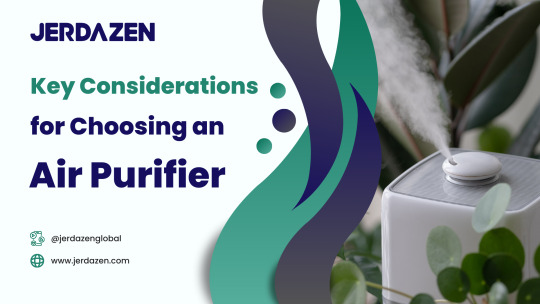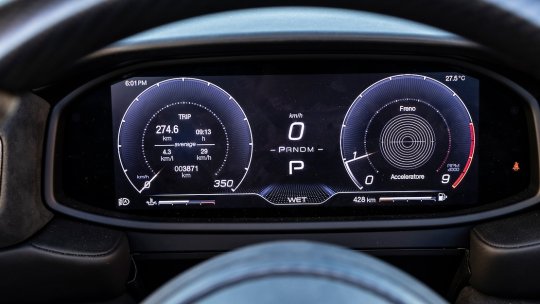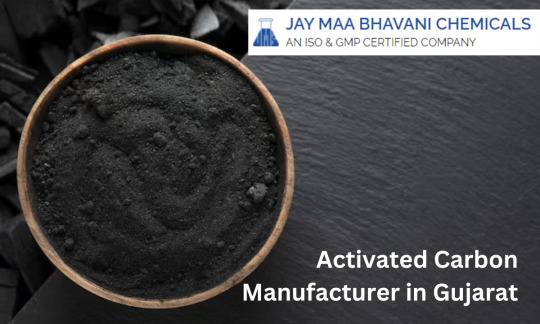#Activated air Carbon Filters
Explore tagged Tumblr posts
Text
Parknonwoven brings you a comprehensive suite of industrial solutions featuring EPP Dunnage Boxes, Dust Bag Filters, Refrigerator Air Filters, Liquid Bag Filters, and Activated Carbon Filters. Our EPP Dunnage Boxes ensure secure transit for delicate components, while advanced Dust Bag Filters guarantee high-performance air filtration. Elevate refrigeration with our specialized Refrigerator Air Filters, and enhance liquid filtration efficiency with Liquid Bag Filters. Additionally, our Activated Carbon Filters offer superior air purification. Trust Parknonwoven for cutting-edge solutions that prioritize quality, efficiency, and reliability across diverse industrial applications.
#Activated air Carbon Filters#Liquid Bag Filters#Refrigerator air filter#Dust Bag Filters#EPP Dunnage Boxes
0 notes
Text
Activated carbon filters are porous materials used to purify air and water by trapping and removing contaminants through adsorption. They consist of activated carbon particles with a high surface area, providing an effective means of removing impurities such as chemicals, gases, odors, and organic compounds.
The activated carbon filters market size is projected to grow from USD 267 million in 2020 to USD 330 million by 2025, at a CAGR of 4.4%. The activated carbon filters market has been gaining significance with its major application in water treatment and air purification; the duo being its major applications. Stringent government regulations implying directives for industrial water pollution and quality drinking water have led to fast growth and acceptance of activated carbon filter products. These regulations are being implemented in the regions of Europe and North America and also gaining importance in the APAC region. The policies and regulations implemented by different authorities for supporting the use of activated carbon filters are attributing to the growth of activated carbon filters market.
#Activated Carbon Filters Market#Activated Carbon Filters Price#Activated Carbon Filter Manufacturers#Stainless Steel Shell#Carbon Steel Shell#carbon filter air purifier#activated carbon water filter#activated charcoal filter#activated charcoal water filter#air purifier with activated carbon filter#filter activated#granular activated carbon filter#catalytic carbon filter#activated carbon filters#carbon water filter#water filter charcoal#carbon air filter#blueair 411 filter#Activated Carbon Filters Market Analysis#Activated Carbon Filters Market Size#Activated Carbon Filters Market Share#Activated Carbon Filters Market Trends#Activated Carbon Filters Market Growth#Activated Carbon Filters Market Research#Activated Carbon Filters Market Revenue#Activated Carbon Filters#Global Activated Carbon Filters market#Activated Carbon Filters Market Overview#Activated Carbon Filters Research Report#Activated Carbon Filters research insights
0 notes
Text
Filtrex Technology PTE LTD, Singapore: Water Filter Cartridges' Unmatched Value
Filtrex Technology PTE LTD strives to offer the best water filter cartridges. We carry many cartridges optimised for water filtration systems. Our high-quality, effective, and long-lasting products offer the best return on investment.
#process filtration singapore#process filter cartridges singapore#compressed dry air singapore#compress air purification singapore#process filters singapore#Activated Carbon Singapore#Compressed air dryer Singapore#Compressed air system Singapore#Compressed dry air Singapore#Compress air purification Singapore#Compress air purification specialist#Purification specialist Singapore
0 notes
Text

Buy CarboMELT, activated carbon melt blown filter media from top supplier in India. Get high-quality Cabin Filter, Air Purifier Media for enhanced Air purification at best price.
#CarboMELT#Carbon Melt Blown Media#Melt Blown Carbon Filter#activated carbon filter media manufacturers#Activated Filter Media#activated carbon filter price in india#carbon filter air purifier
0 notes
Text
Applications of Activated Carbon Filters
Activated carbon filters are essential for removing pollutants and volatile organic compounds from homes and everyday activities. Air purifiers, water purifiers, and respiratory masks are used to adsorb toxic gases and fumes. In air purifiers, activated carbon is placed into a carbon filter, which removes dust, mold, and allergies.
Website: www.jmbcarbon.com

Water filters use activated carbon to reduce pollution in various applications, such as agricultural irrigation, drinking water, aquariums, and swimming pools. Activated carbon filters for water treatment effectively remove organic compounds, chlorine, hydrogen sulfide, and other pollutants.
These filters are used in respiratory masks, which filter airborne particles and allergens. Activated carbon filters are used in various industries, including analytical chemistry, metal polishing, and groundwater remediation. They also serve as catalysts for chemical synthesis and catalytic applications.
Activated carbon filters are essential in air and gas purification, capturing flammable gas molecules and absorbing harmful substances. They also help reduce airflow and prevent environmental pollution in the chemical and pharmaceutical industries. Activated carbon filters are essential for clean drinking water, filtration, and removing harmful substances from municipal water. They improve the flavor, aroma, and color of distilled beverages like whiskey and vodka.
Read Top 5 Applications of Activated Carbon Filter to learn more about activated carbons. JMB Chemicals is a granular activated carbon supplier offering a wide range of activated carbon for any application, as per your preferences. If you are interested in our product, do not hesitate to contact us here.
#activated carbon for water treatment#application of activated carbon#granular activated carbon#granular activated carbon supplier#washed activated carbon#Unwashed Powdered Activated Carbon#Unwashed Activated Carbon#activated carbon water filter#acid washed activated carbon#JMB chemicals#JMB Carbons#Activated carbon in air filters
0 notes
Text
4 Simple Ways to Keep Allergy Season at Bay
(Family Features) With warmer outdoor temperatures, many homeowners suffer through longer allergy seasons. In fact, allergy days have increased by 20 days, according to a study conducted by the National Academy of Sciences. Being aware of air quality indexes and limiting time outdoors can lessen exposure to airborne pollutants, but indoor air quality is also a concern. In a report from the U.S.…

View On WordPress
#activated carbon filter#air purifiers#air quality#airborne germs and viruses#allergens#allergy season#Carrier#dust mites#Healthy Homes Program.#home environment#humidity#HVAC#indoor air quality#indoor air quality monitor#mold growth#particulate#pollutants#room air purifiers
0 notes
Text
Look in the technical specifications to confirm
Units with one or no filter almost always mean a lot of maintenance with washing, spraying cleaning or vacuuming the filter.. Here are 5 features you want to avoid when choosing a cleaner for your baby. Just because you want clean air shouldn;t mean you have to have an ugly purifier. Studies have found that in order for them to be effective the amount of ozone would have to reach deadly levels. But elechomes air purifier filter replacement a cleaner with the wrong features can be worse than not having one. Limited Operation---The pollutants in your baby;s room won;t take a break and the cleaner you choose shouldn;t have to take one either.
A better choice is a purifier with multiple sized filters that are able to eliminate a wide range of particles varying from those you can see to those that are microscopic. A split capacitor motor is the type of motor necessary to allow the unit to operate safely and effectively 24 hours a day every day whether you are home or away. And when life calms down again you can adjust the filtration speed to match. Look in the technical specifications to confirm that the unit can run 24 hours a day. Choose a cleaner that can offer you a wide range of colors including pink, blue, and other more neutral colors.
Avoid Unattractive---You nursery is probably gorgeous. Ionizing units depend on charging particles and attracting them to a steel plate inside the unit. Being able to filter out pollutants at varying speeds is an advantage you don;t want to be without.. Using an air purifier to make sure the air stays fresh is a good move. Those cleaners that produce any amount of ozone should be avoided. That is the level of filtration that is necessary to keep the in the nursery fresh, and clean. You need a unit that can respond quickly and efficiently. Harmful By-Product---The only by product for any purifier should be fresh air. One or No Filter---The more filters a cleaner has the better able it is to eliminate particles without constant replacement filters being necessary. A range of at least 3 speeds on your cleaner will allow it to keep up and eliminate pollutants as they happen. It is also a huge advantage to choose a unit that has a filter that can eliminate gaseous pollutants as well.
The problem is that the steel plate does not always capture all of them, and charged particles are more likely to stick to lining inside the lungs. Continuous cleaning is the only way to assure that your baby;s air is always healthy. Steer clear of purifiers that use ozone or ionization.Now that you have a baby, you want the room where they spend most of their time to be perfect. The right cleaner will be able to stay with your child for a long, long time. One Filtration Speed---With a baby things happen fast, and often without warning. And even with all the extra work, the filter life is generally only 3 to 6 months.. Frequent filter replacement adds to the cost to run the machine, and time spent replacing the filter is time that the air is not being cleaned
0 notes
Text
Related to the convergence vs. contingency ask I got a while ago, here's a list of adaptations I'd expect to find on any planet with Earth-like surface conditions and complex (equivalent to Earth's post-Cambrian) life:
Cellular organization, eukaryote-like cells with separated compartments for genome and energy production; large organisms multicellular or at least multi-nucleate
Most energy in the biosphere ultimately from sunlight; most energy is produced in the shorter term by transferring electrons to a strong oxidiser, most likely oxygen
Sex-like recombination of genomes common; most large organisms have a unicellular stage in their lifecycle (e.g. a zygote) and reproduce sexually at least part of the time (and when they do, each individual has two genetic parents); some kind of sexual dimorphism is very common at any given time, at least at gamete level
Most biomass at any given time consists in photoautotrophs, i.e. organisms using sunlight to synthesize organic molecules from scratch; biomass on land is greater than biomass in water, unless land is rare or the colonization of land has not occurred a long time ago
Fractal structure and/or radial symmetry common among organisms that move little actively or not at all; phototrophs have leaf-like light collectors that overlap to form a dense canopy
Bilateral symmetry dominant among organisms that move actively (so, clear distinction between front and back, and between up and down, but not between left and right, especially in outer morphology); sense organs, mouth, and central nervous system concentrated at the front end
Multiple "tree-like" and "worm-like" clades; filter-feeding a very common strategy in water; everything that has to move fast in water is spindle-shaped
Nearly all mobile organisms have long-range chemical, mechanical, and electromagnetic senses (i.e. smell, hearing, and sight), with the respective organs arising independently many times; perception of electrical fields may be common in water but not in air; communication is overwhelmingly vocal and/or visual
Every large organism has some sort of skeletal support; a skeleton based on hydraulic pressure is common in small organisms that move slowly, and a jointed exoskeleton is probably common in small faster movers (hard shells built from carbonates or silica will be popular in water), but the vast majority of largest organisms (say, >1 kg) probably has an internal skeleton
79 notes
·
View notes
Text
Excerpt from "The Entropy Effect" by Vonda N. McIntyre
McCoy flung himself around, swinging his fist in a clumsy roundhouse punch. “Damn you, Spock! Damn you, damn you—” Spock grabbed his hand easily. McCoy kept on trying to hit him, flailing ineffectually against the science officer’s restraining strength. “Dr. McCoy, you know that I am right.” McCoy slumped, defeated. “You cannot hold him any longer. You did your best to save him, but from the moment he was wounded he could not be saved. This failure holds no shame for you, unless you prolong a travesty of life. Let him go, doctor, I beg you. Let him go.” The Vulcan spoke with penetrating intensity. McCoy looked up at him, and Spock pulled away, struggling to hide the powerful feelings of grief and despair that had come perilously close to overwhelming him. “Yes, Mr. Spock,” McCoy said, “you are right.” He opened the door of the quarantine chamber. Air sighed past him into the negative-pressure room, and he went inside. Spock followed. McCoy examined the EEG one last time, but he knew better than to hope for any change. The signal remained flat and colorless; all the tracings sounded the same dull tone. McCoy brushed a lock of hair from Jim’s forehead. He could hardly bear to look at his friend’s face anymore, because of the eyes. Precisely, deliberately, he went to work. Once he had made up his mind, his hands moved surely, unaffected by the liquor he had drunk. He withdrew the needles from Jim’s arm. The chemistry signals started changing their harmonies immediately. The oxygen tones fell, carbon dioxide rose; nothing filtered out the products of metabolic activity. The signal deteriorated from perfect harmony to minor chords, then to complete discord. McCoy removed the connections that would have restarted Jim’s heart when inevitably it failed. Finally, his teeth clenched hard, McCoy disconnected the respirator. Jim Kirk’s heart kept on beating, because the heart will keep on beating even if it is cut out of the chest; the muscle will contract rhythmically till the individual cells fall out of sync, the heart slips into fibrillation, and the cells die one by one. But the breathing reflex requires a nerve impulse. When McCoy turned off the respirator, Jim’s body never even tried to draw another breath. After the final, involuntary exhalation there was no struggle at all, and that, far more than the evidence of the machines, the persuasion of Spock, or his own intellectual certainty, finally convinced McCoy that every spark or whisper of his friend was dead. All the life-signs stabilized at zero, and the tones faded to silence. The doctor pulled a sheet over Jim’s face, over the dead gray eyes. McCoy broke down. Sobs racked him and he staggered, suddenly aware of just how much he had drunk. He nearly fell, but Spock caught him, and supported him in the nearest thing to an embrace that the Vulcan could endure. “Oh, god, Spock, how could this happen?” McCoy sank gratefully into darkness. Spock caught McCoy as he fell, and lifted him easily. Loss and regret pulled at Spock so strongly that he could not deny their existence; all he could do was keep them from showing outwardly. That did not lessen his private shame. His face set, he carried McCoy to one of the cubicles and eased him onto a bunk. He removed McCoy’s boots and loosened the fastenings of his sweat-stained uniform shirt, covered him with a blanket, and lowered the lights. Then, recalling the single, humiliating, inadvertent time he himself had become inebriated, Spock decided to stay until he was certain the doctor had not ingested enough ethanol to endanger his life. Spock sat in a chair near McCoy’s bed and rested his forehead against his hand.
Punch me right in the feelings. 😥
55 notes
·
View notes
Text
over 20,000 people in the United States died of Covid-19 since the beginning of 2024. Millions who avoided death are nonetheless still living with Long Covid, and this number grows each month. We are still in crisis.
Most importantly, though, implementing accessibility measures during an active pandemic is the right thing to do, as it makes events safer for everyone. Black communities, people of color, the disability community at large, members of the LGBTQIA+ community, and low-income communities continue to be especially hard-hit by the pandemic and the abandonment of Covid-19 precautions. The pandemic reproduces the very forms of ableism, classism, and racism that existed before 2020. There are millions of already systemically marginalized people who are being further pushed out of public life. This is unjust, and we must do better.
[However,] a blueprint for radical inclusion and living a full, safer life within the context of Covid-19 exists.
source

Install HEPA filters in your space. Installing a plug-in air purifier in your space is a great place to begin. Because almost all public spaces currently fall short of the ventilation needed for Covid-19 safety, it’s safe to assume that your space would also benefit from this efficient first step. Make sure it’s appropriately sized for your space and continuously running. If funds allow, upgrade your HVAC system to include HEPA filtration.
Practice mask requirements. Consider requiring and providing high-quality masks for everyone who will be in your space and attending your events. Contrary to popular belief, mask requirements do not deter guests in any meaningful numbers. Clean Air Club has been hosting Covid-safer events in Chicago for over a year, and a majority of the mask-required events sell out every time. If obtaining masks for your event is cost-prohibitive, check in with your local mask bloc for assistance.
Collect and share data on the safety of your space and region. Collect data on the ventilation in your space using a carbon dioxide (CO2) monitor. The higher the number, the more attention you need to pay to improving the ventilation and air purification in the space. Open windows and doors, crank up the HVAC, and plug in another purifier. You’ll know you’ve succeeded when the CO2 levels in your space are close to the levels expected outdoors in fresh air (around 400 ppm). As a bonus, this improved ventilation and purification will remediate poor air quality due to climate-change induced wildfires, improve concentration, and aid in accommodating disabling conditions such as asthma and allergies. Data collection should also include monitoring wastewater data, now our most accurate picture of the true prevalence of Covid-19 and other wastewater-monitored viruses in our population at any given time. We can use this data to increase the number of mitigation strategies adopted when wastewater levels are high. Consider creating an internal chart at your organization that lists protocols associated with different wastewater levels, reducing the burden of communication and oversight during higher periods.
Consider additional mitigation layers. Some of the other layers of protection from the swiss cheese model include: pre-event testing, far-UVC lights, providing options for virtual participation, and asking guests to stay home if they’re showing any symptoms of contagious or novel illness. Consider promoting individualized mitigation approaches within your organizations, such as the usage of nasal spray and CPC mouthwash. The key is to remain creative, flexible, and open to adding layers of protection in response to changing risk levels in the environment.
Open up lines of communication. As you implement mitigation layers, communicate them to your community. Ask them how they’ve been impacted by Covid-19 and give people space to share their access needs and ideas. This will provide a crucial why behind your actions and investments. Using the accessibility principle of designing for the highest possible need, your virus safety plan should accommodate the most vulnerable and impacted community members rather than those who have high risk thresholds or behave as though the pandemic is over. Part of effective pandemic communication includes providing accessibility and virus safety information in an Access Note or in an Accessibility Guide. This information should be repeated often in marketing and outreach materials.
Resources
30 notes
·
View notes
Note
the air purifier advice please 🙏
hello!!!!! yes, i will info dump some of the things i come across at work everyday, hopefully it helps!
Quick overview on how air purifiers work: ok so purifiers don't "kill" bacteria/particles which is a lot of the marketing you'll see, air purifiers take in air, filter out particles, and push out clean air back into your home so you don't breathe in the dangerous particles: it's all about airflow (created with a strong motor) and filter type
ONLY trust HEPA and activated carbon filters. every other "technology" out there is not sound, there's no definitive research that proves the effectiveness of any other tech on the market. at best it's ineffective, at worst it's dangerous, i wouldn't trust any of it. some common types of technologies to avoid: ozone generators, ionizers, uv light, when a company has their own "patented tech" that isn't HEPA or carbon
HEPA: this targets airborne particles. dust, pet dander, mold spores, pollen, smoke particles
ACTIVATED CARBON: this targets gasses, volatile organic chemicals (VOCs), odors, smoke odors
Try to find a purifier that's going to cover a lot of your home or at least an entire room - they're portable so I suggest moving them around during the day if you can and bringing them into your bedroom at night.
Finding a purifier that covers your home/room: suggested air changes per hour (ACH) is 4.8 - many companies will list 1 ACH for their square foot coverage to make it seem like it can cover a lot, and it's just not true. Companies SHOULD be sharing their clean air delivery rate (CADR) information that is connected to ENERGY STAR and is tested by the regulatory agency so they cannot fudge their numbers, if they don't share this information it's a red flag
Check CADR and square foot coverage at 4.8 ACH for a product HERE
For example: an air purifier that can clean 1,000 sq ft in 60 minutes with 1 ACH, can clean 500 sq ft in 30 minutes with 2 ACH, and 80 sq ft in 12.5 minutes with 4.8 ACH (it's confusing, i know, but it's important to have a purifier(s) strong enough to clean your indoor space)
Air quality sensors built into purifiers are cheap, i don't trust them to accurately portray your indoor air quality readings, also the apps are...awful: the markets been flooded with smart purifiers it's tough to find one that DOESN'T have an app attached to it. there's nothing wrong with a smart purifier, its up to the user, but its that they can up the price with the add-ons that don't help the main goal of your purifier: clean your indoor air and create healthy indoor air quality in your home
Cross ventilation helps, open those windows!!! air out your home!!! but don't open them on high pollen count or bad air quality days or if you're located near high pollution or close to an active wildfire or smoke. you can check US location air quality HERE ALSO, don't run your air purifiers while you have the windows open. they'll try to clean the outside airflow too, rendering it pretty ineffective.
Look for certifications!!! ENERGY STAR, AHAM, CARB, INTERTEK - these are independent safety and performance certifications that companies have to go through a testing process to receive them, it's not just marketing these are regulations and are standard - if a company doesn't share these results or aren't certified MAJOR red flag
Run those purifiers 24/7!!!!! If they're ENERGY STAR certified (they should be, look for the logo!!) it shouldn't affect your energy bill in a significant way
Just because a purifier costs more doesn't mean it performs better!! just focus on the air cleaning ability: the thing a purifier IS MEANT TO DO: and try to forget about the rest
Unfortunately, a good purifier is always going to be a bit of an investment. the mini purifiers out there and the wearable ones just do not do anything, i wish they did, but filters need surface area to be effective, they're too small, and the motor isn't efficient.
Good news is there should be some very good sales coming up in november!!!! stay safe!!
5 notes
·
View notes
Text

Enhance your logistics with EPP dunnage boxes. Maintain air quality with dust bag and activated carbon filters for refrigerators. Ensure purity with liquid bag filters.
#pet acoustic panel#pp + pet felt#breather fabric#non woven battery gaunlets#fiber glass felt#plastic extrusion profile#compressor felt#Activated air Carbon Filters#Liquid Bag Filters#Refrigerator air filter#Dust Bag Filters
0 notes
Text

Key Considerations for Choosing an Air Purifier - Must-Know Before Buying
Deciding on an air purifier can be confusing with the myriad of options available. Here's a streamlined guide to help you make the best choice: 📘
Filter Types HEPA Filters: Capture 99.97% of particles, excellent for allergens and dust. 🌬️ Activated Carbon: Best for removing odors and gases. UV Filters: Kills bacteria and viruses, does not trap particles.
Room Size Compatibility Match the purifier with your room size using the Clean Air Delivery Rate (CADR).
Noise Level For bedrooms, opt for purifiers with a noise level under 30 dB.
Energy Efficiency Choose Energy Star certified models to save on energy costs. 💡
Additional Features Prefer purifiers with air quality indicators, filter change alerts, and variable speeds.
Maintenance Costs Consider the long-term expense of filter replacements.
By focusing on these essential factors, you can find a purifier that effectively cleans your home's air and supports your family's health.
5 notes
·
View notes
Text
The Essential Guide to Wastewater Treatment Plants: Turning Waste into Resource
Wastewater treatment plants (WWTPs) are the unsung heroes of urban infrastructure. As they work tirelessly behind the scenes, they transform contaminated water into a clean resource that can be safely returned to the environment or even reused. In this article, we’ll explore the critical role of wastewater treatment plants, their processes, and the benefits they bring to our communities and ecosystems.
Understanding Wastewater: What Is It?
Before delving into the intricacies of treatment plants, it’s vital to understand what wastewater is. Wastewater is any water that has been adversely affected by human activity. This can include:
Domestic Wastewater: From sinks, toilets, and showers in households.
Industrial Wastewater: Generated from manufacturing processes and commercial activities.
Stormwater: Rainwater that collects pollutants as it flows over surfaces.
Proper management of these types of wastewater is crucial for public health and environmental protection.
The Importance of Wastewater Treatment Plants
Wastewater treatment plants are essential for several reasons:
Public Health: Proper treatment of wastewater prevents the spread of waterborne diseases.
Environmental Protection: Treated water reduces pollution in rivers, lakes, and oceans, preserving aquatic ecosystems.
Resource Recovery: Many plants can recover valuable resources, such as nutrients and energy, from wastewater.
Sustainable Practices: Modern WWTPs incorporate technologies that promote sustainability, reducing their carbon footprint.
The Process of Wastewater Treatment
The treatment of wastewater is a complex process that typically involves several stages. Let’s break down these stages:
1. Preliminary Treatment
In this initial stage, large debris such as sticks, leaves, and plastic are removed from the wastewater. This is usually done through screening and grit removal processes.
2. Primary Treatment
After preliminary treatment, wastewater moves to primary treatment, where solids settle to the bottom, forming sludge. This process removes about 50-70% of suspended solids and approximately 30% of biological oxygen demand (BOD).
3. Secondary Treatment
Secondary treatment is crucial for further reducing organic matter. This stage usually involves biological processes, where microorganisms break down organic pollutants. There are various methods used in secondary treatment, including:
Activated Sludge Process: In this method, air is pumped into the wastewater, allowing microorganisms to feed on the organic material.
Trickling Filters: Wastewater is distributed over media, allowing microorganisms to grow and treat the water as it trickles through.
4. Tertiary Treatment
Tertiary treatment is an advanced stage that further polishes the water. This can involve filtration, nutrient removal, and disinfection processes like chlorination or ultraviolet (UV) light treatment. The goal is to ensure that the water is safe for discharge or reuse.
5. Sludge Management
Throughout the treatment process, sludge is generated. This sludge must be treated separately to reduce its volume and make it safer. Common methods include anaerobic digestion, which produces biogas, and composting, which can create a valuable soil amendment.
Innovations in Wastewater Treatment
The landscape of wastewater treatment is evolving, thanks to technological advancements. Here are some innovations transforming the industry:
1. Membrane Bioreactors (MBRs)
MBRs combine biological treatment with membrane filtration, allowing for higher quality effluent and smaller footprint operations. This technology is ideal for areas with limited space.
2. Constructed Wetlands
These engineered ecosystems mimic natural wetlands to treat wastewater. They are cost-effective and environmentally friendly, providing additional habitats for wildlife.
3. Resource Recovery Facilities
Modern WWTPs are increasingly focusing on recovering valuable resources from wastewater. This includes extracting nutrients like nitrogen and phosphorus, which can be used as fertilizers, and capturing biogas for energy production.

The Benefits of Wastewater Treatment Plants
Investing in wastewater treatment has far-reaching benefits:
1. Economic Advantages
Efficient wastewater treatment supports local economies by ensuring clean water for industries and agriculture. It also creates jobs in engineering, operations, and maintenance.
2. Environmental Sustainability
By reducing pollution and conserving water resources, wastewater treatment plants contribute to a healthier planet. They play a critical role in combating climate change by mitigating greenhouse gas emissions from untreated wastewater.
3. Improved Public Health
Access to treated wastewater prevents health risks associated with untreated sewage. This is especially crucial in developing regions where sanitation infrastructure may be lacking.
Challenges Facing Wastewater Treatment Plants
Despite their importance, wastewater treatment plants face several challenges:
1. Aging Infrastructure
Many WWTPs are outdated and require significant investment to upgrade. Aging systems may lead to inefficiencies and increased pollution.
2. Climate Change Impacts
Extreme weather events and rising sea levels can impact the operation of wastewater treatment facilities. Adapting to these changes is crucial for future resilience.
3. Public Awareness and Engagement
Many communities are unaware of the vital role that WWTPs play. Increasing public engagement can foster support for necessary investments and improvements.
Conclusion: The Future of Wastewater Treatment
Wastewater treatment plants are more than just facilities for cleaning water; they are essential components of sustainable urban development. As technology continues to evolve, these plants will become even more efficient and capable of recovering resources, ultimately contributing to a circular economy.

By recognizing the importance of wastewater treatment and supporting innovations in the field, we can ensure that our communities remain healthy and our environment is preserved for future generations. Investing in wastewater treatment Plant is not just about managing waste; it’s about embracing a sustainable future.
2 notes
·
View notes
Photo










Maserati MC20 Cielo
Cielo means “sky” in Italian, and we knew the MC20 Spyder was imminent the moment the company rebooted itself by launching the coupé. What we couldn’t foresee is Maserati’s plan to help supercar drivers get rid of their unfortunate hat choices by introducing a folding hardtop with Polymer-Dispersed Liquid Crystal technology, the more advanced smart glass Mercedes and McLaren customers could only dream of under their less sufficient SPD glass roofs. What’s more, Maserati says the full-electric version of the MC20, the upcoming Folgore will also come first as a Cielo Spyder.
There are two active glass solutions in the luxury automotive segment. The suspended particle roof from automotive supplier Gauzy is transparent when not under power, and can only go from a light 30 percent tint to “a nearly opaque” 95-percent tint. The Maserati glass roof developed by Webasto, however, is fully opaque when the car is parked, going fully transparent if you wish. What’s more, it offers 96-percent ray reflection due to a filter layer at the bottom, alongside better thermal and noise isolation. In practice, it looks something like this from the passenger seat:Operating at speeds up to 31 mph, this 12-second folding roof represents a 143-pound weight penalty over the coupé, not bad at all. The carbon fiber monocoque is layered and foamed differently to maintain a high torsional rigidity, which is also aided by the one-piece aluminum frame of the roof mechanism, bolted in between the monocoque and the rear shock towers. Sixty percent of the spyder’s 3,395 pounds is on the rear axle, which now uses a milder differential ratio as well.The chassis settings, power curves and performance figures remain unchanged. The slightly higher rear section brought a minimal increase in drag, while the springs are a touch stiffer to compensate for the extra weight, aided by more rebound. Being the lifestyle choice, the MC20 Cielo Spyder isn’t here to break track records, yet will still reach 62mph in 3.0 seconds, and keep going until the 200 mph mark.
A popular design feature of the hardtop MC20 happens to be its rear screen with the trident-shaped cutouts that aid cooling of the 3.0-liter twin-turbo V-6. With that piece being replaced by the roof holder and its cover, design chief Klaus Busse and his team went for new boomerang-shaped outlets cut into the side fenders, while engineering came up with deflectors that channel clean air to the intercooler through the equally discreet additional air intakes. Busse explained that while his design team insisted on retaining the MC20’s sleek roofline and clean side profile, engineering got every chance to use the bottom half of the car, finished in carbon fiber instead of body color to optimize aerodynamics, resulting in the retained downforce levels and low drag despite the raised rear panel.
Optionally, for those who miss the rear screen, Maserati is offering a large titan finish Trident logo sticker on the roof cover panel, which screams MASERATI at everybody driving behind when the roof is raised or dropped. It's also something of a visual trick to hide the cover’s extra volume.
40 notes
·
View notes
Text
Activated Carbon Manufacturer in Gujarat
JMB Carbons is a Gujarat-based activated carbon manufacturer that specializes in manufacturing and supplying various varieties of activated carbon powder, granules, pellets, and fiber products. They offer high-quality activated carbon that has applications in many industries, including colored purifier recapture rate, and can remove contaminants and toxins from food, air, water, and pharmaceutical items. Their company manufactures and supplies premium activated carbon using coconut shells, wood char, and coal as the primary raw materials.
Read Activated Carbon Manufacturer in Gujarat, to know more.
Website: www.jmbcarbon.com

JMB Carbons is a brand of carbon products sold under their brand to meet the widest range of applications in various industries, such as water treatment plants, Gold Recovery, Petroleum Refineries, Effluent Treatment Plants, Gas and Air Purification systems, Food and Beverage Industries, etc. Activated carbon products are used for air and gas purification, chemical treatment, pharmaceuticals, gold recovery, the biogas industry, and marine removal.
They are suitable for commercial and domestic water treatment applications and also remove unwanted compounds from biogas. JMB Carbon provides special-grade activated carbon products for gold recovery and is manufactured with the proper procedures and components to guarantee the proper rate of absorption.
#activated carbon#activated carbon for wastewater treatment#Activated carbon in air filters#activated carbon in the beverage industry#activated carbon in gold recovery#activated carbon manufacturer#activated carbon manufacturer in India#Activated carbon suppliers in India#activated carbon manufacturer in Gujarat#activated carbon supplier in Ahmedabad#acid washed activated carbon#washed activated carbon#unwashed activated carbon#granular activated carbon
0 notes